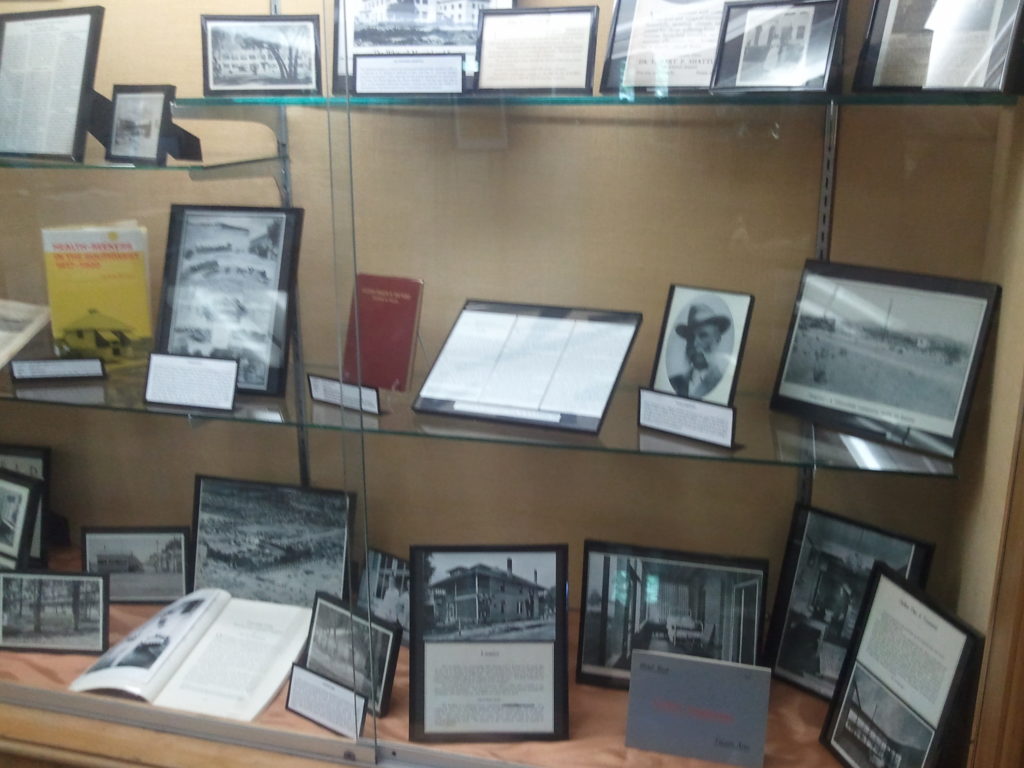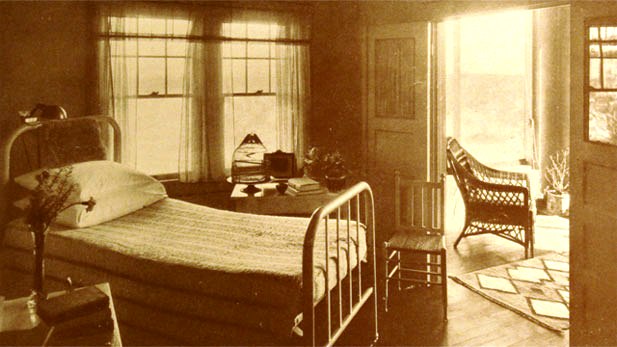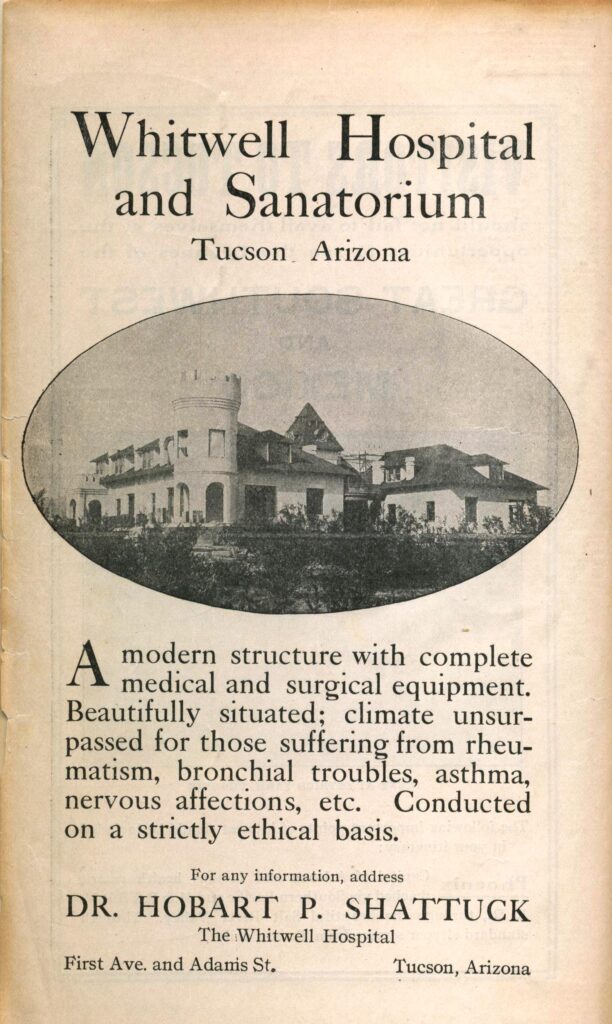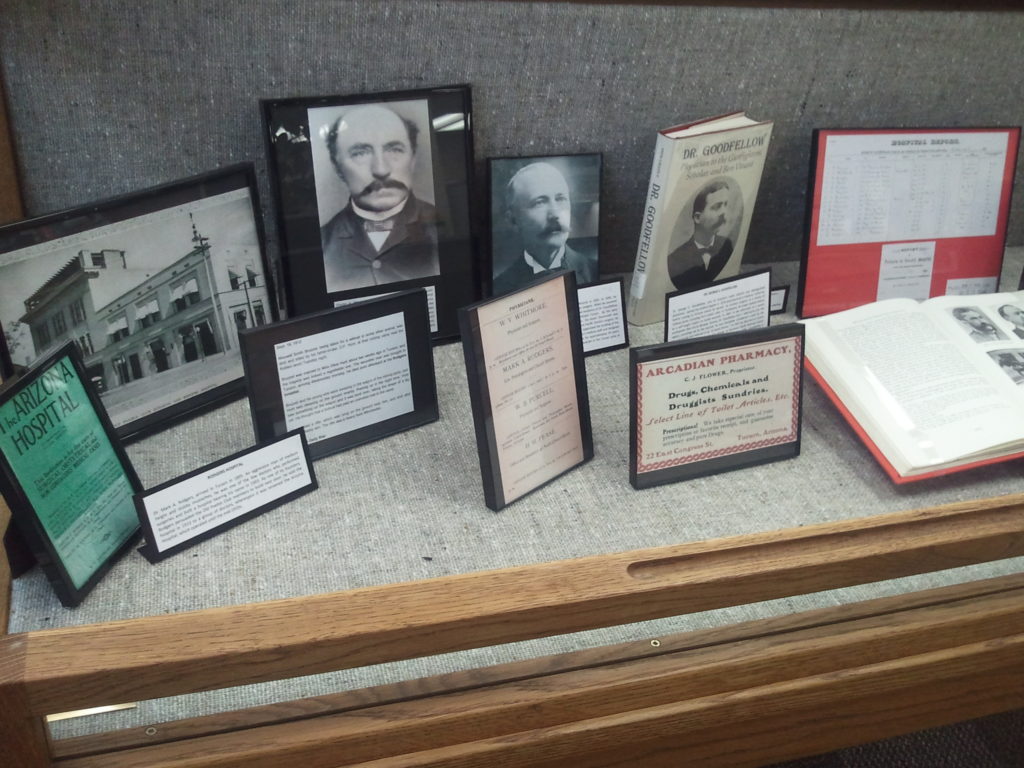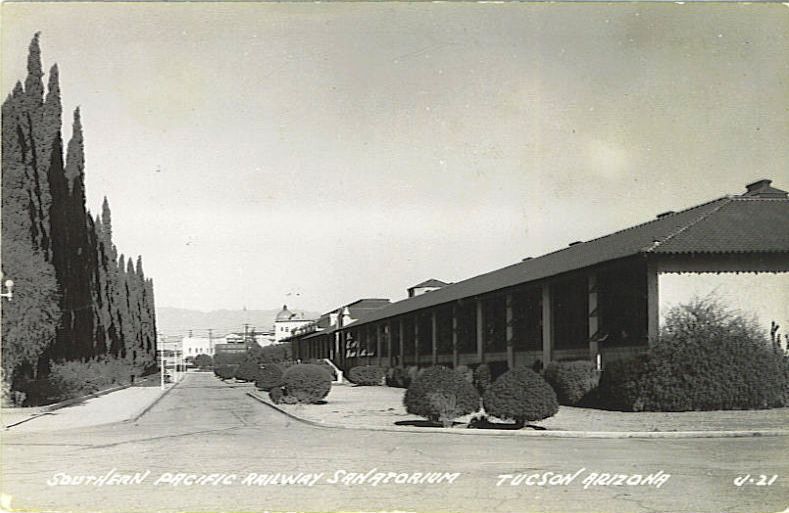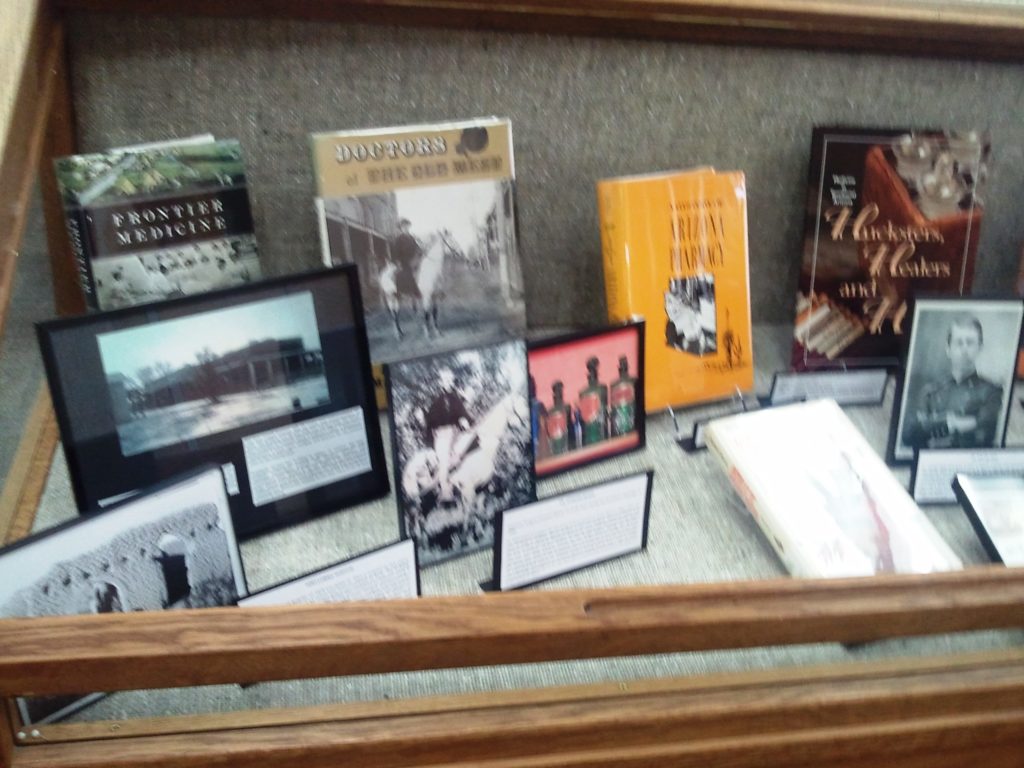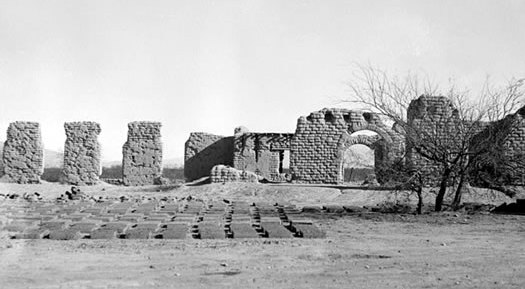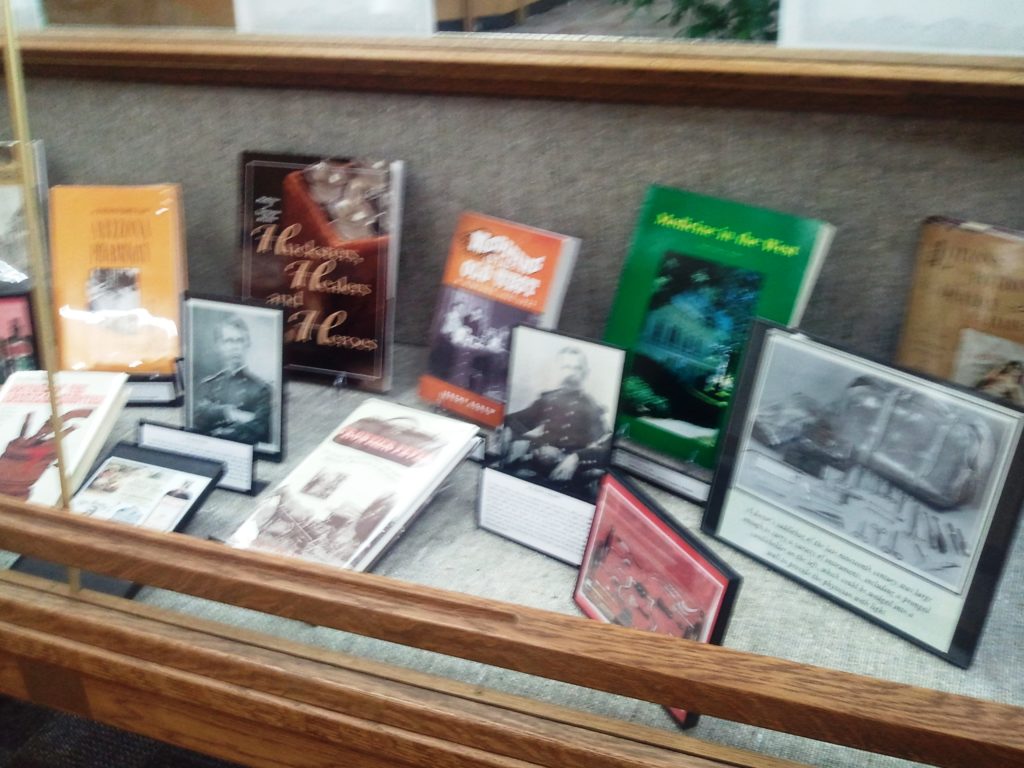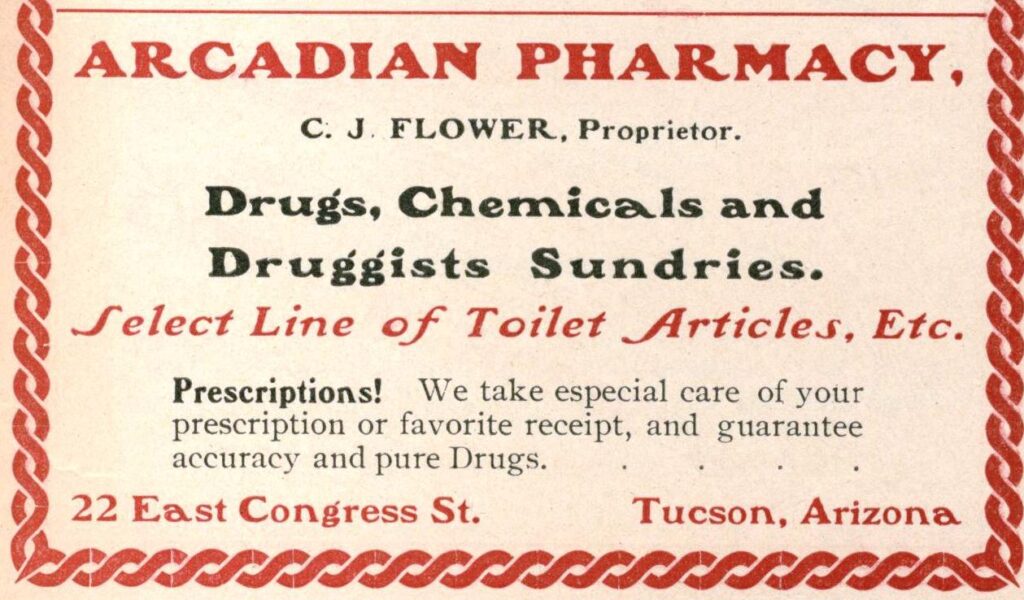
Introduction: This was the second exhibit I curated at the Science Engineering Library. Once again, I found a treasure trove of information in Special Collections, including photographs, news clippings, books, pamphlets and brochures as well as advertisements in local magazines, directories and other sources. I learned a great deal about the topic, including some very interesting facts about tuberculosis and its treatment. Finding information on the Pima County Hospital was also very enlightening, as was learning about the various sanitariums that existed across the community. Another fun project!
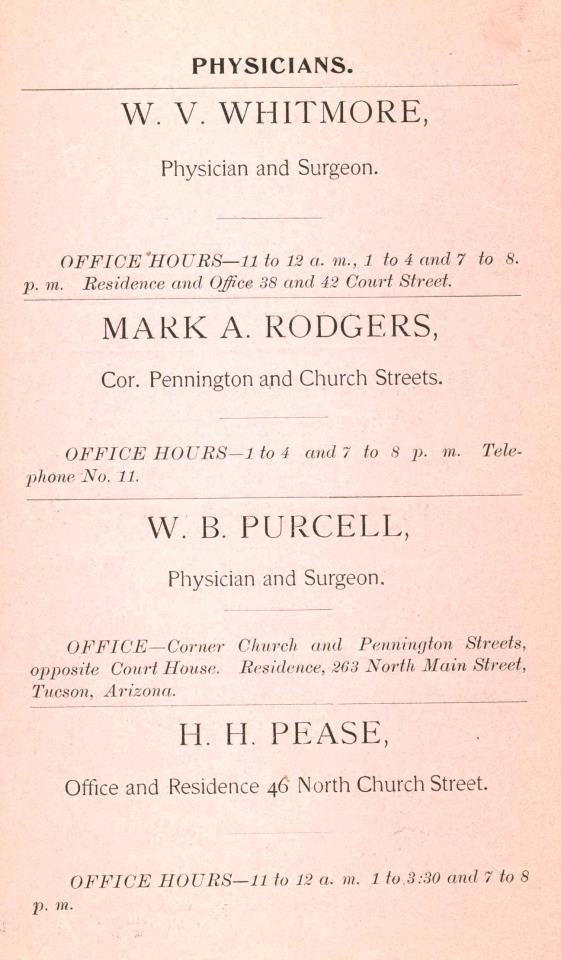
News Release:
A new exhibit at the University of Arizona (UA) reviews 100 years of health care history in Tucson. “A Look at Medicine and Medical Facilities in Early Tucson” showcases Tucson’s system, and business, of health care from the mid-19th century to the mid-20th century. The exhibit is on display from June 19 – Dec. 31, 2012 at the UA Science-Engineering Library, 744 N Highland Ave.
“A Look at Medicine and Medical Facilities in Early Tucson” reviews the history of Tucson health care through three categories: physicians, hospitals, and Tucson’s approach to treating tuberculosis.
Included in the exhibit are profiles, photographs, and biographical information of 9 early Tucson physicians. One of Arizona’s most colorful and distinguished physicians, Dr. George E. Goodfellow, earned his medical degree in 1876 and became a self-taught expert on bullet wounds. He went on to make medical history in Tucson for performing the world’s first successful prostate removal surgery.

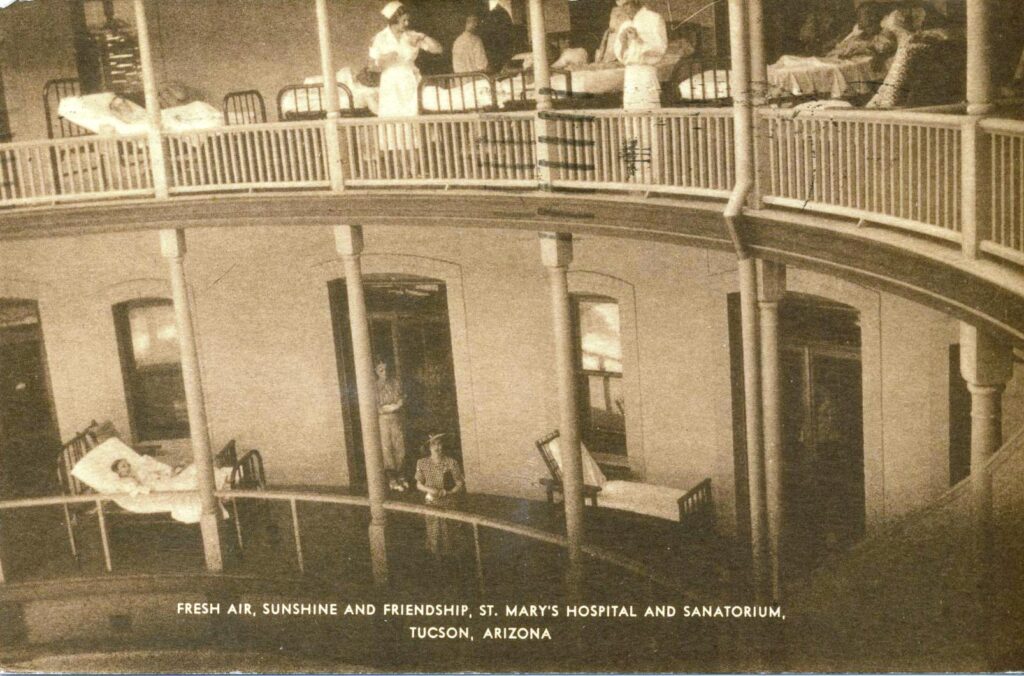
Of interesting note for Pima County physicians was a county
ordinance passed in 1875 that required local physicians to file their
diplomas from accredited schools with the county recorder or face a fine
up to $50. The Territory of Arizona did not take similar action until
1881.
The exhibit also offers a brief historical review
through photographs, books, and ephemera of Tucson’s early hospitals
including St. Mary’s Hospital, Pima County General Hospital, and the
Veteran’s Administration Hospital.
The patient population at
Tucson area hospitals ballooned in the early 20th century, an increase
brought on by patients seeking treatment for tuberculosis which, by that
time, was responsible for 12 out of every 100 deaths in the United
States. Up to 25% of all newcomers to the Southwest over that period
arrived in the region to recover their health, choosing the Southwest
for its warm, dry air and their faith in its healing properties. Notable
among those who came for the healing climate are Governor A.P.K.
Safford, Sam Hughes, Hiram Dodge, “Doc” Holliday, and Harold Bell
Wright.
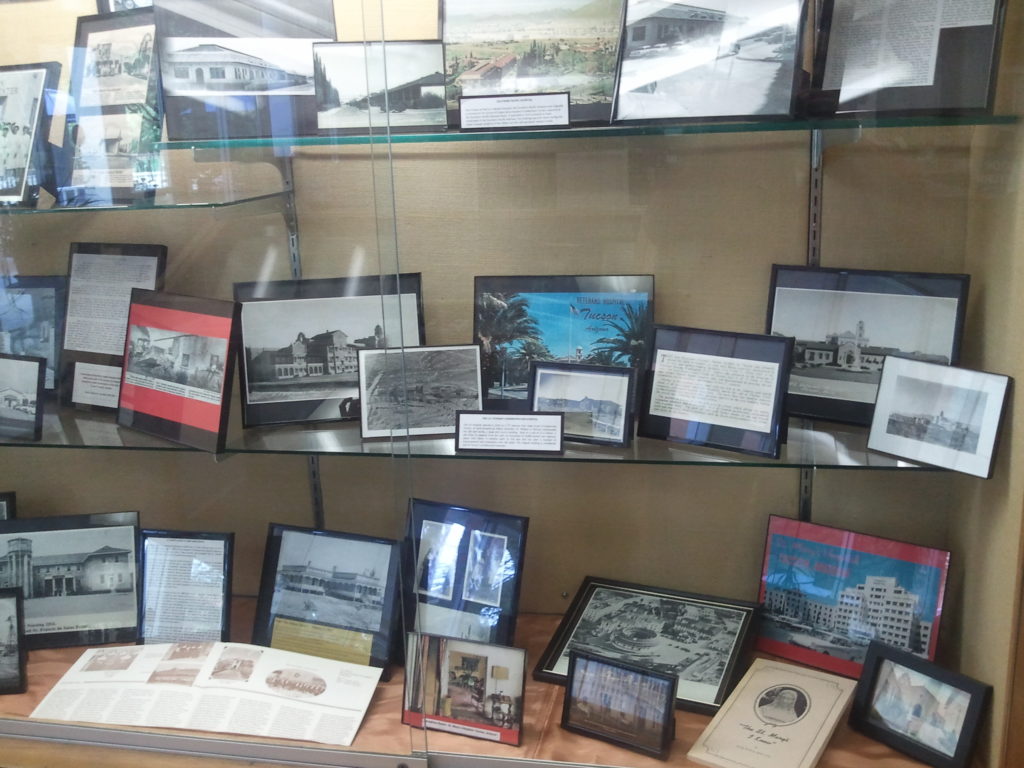

Tucson sanatoriums, including Whitwell Hospital, the Desert Sanatorium, Comstock Hospital, Pastime Park, focused on treating tuberculosis patients. While wealthy patients were received care at resort-like sanatoriums, those without financial means were treated in Tentville, a “squalid ghetto” located in the area north of Speedway Blvd. between Park and North First Avenues. Photographs and ephemera included in the exhibit offer a brief history of Tucson’s sanatoriums.
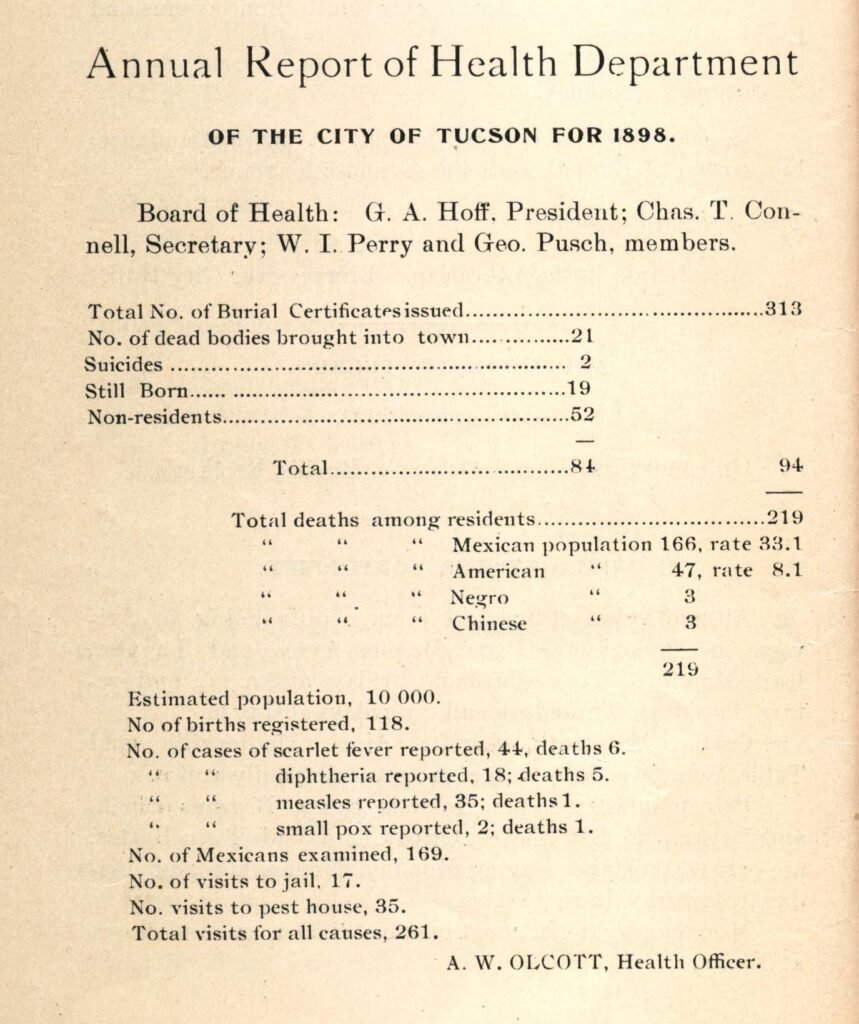
“A Look at Medicine and Medical Facilities in Early Tucson” was curated to coincide with Tucson’s 237th birthday, an occasion where Tucsonans are encouraged to recognize our community’s history, culture, arts and environment.
